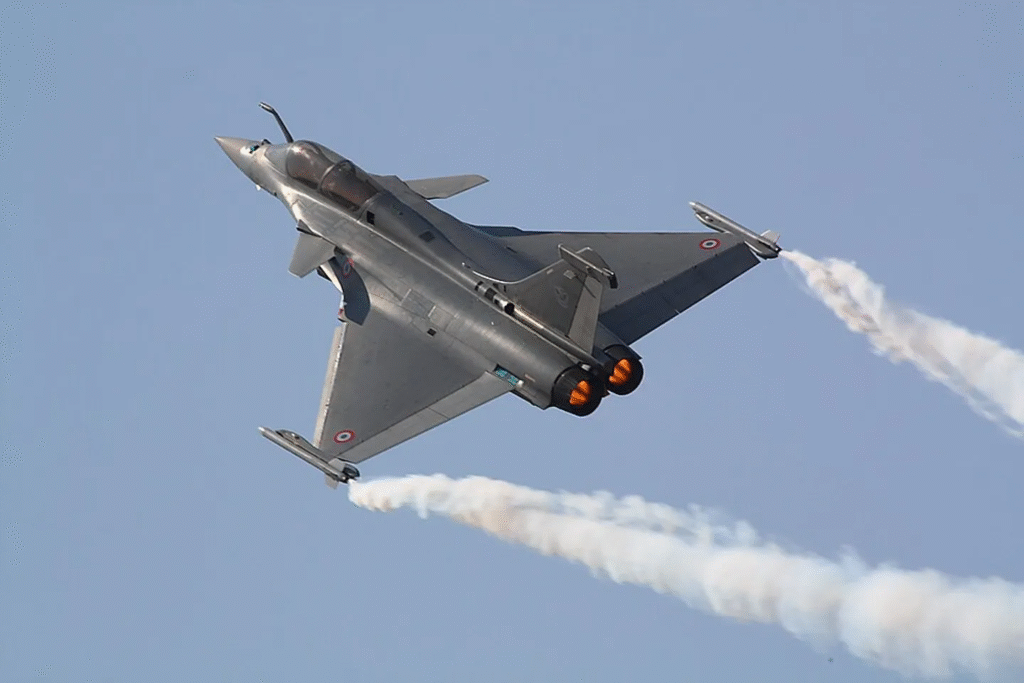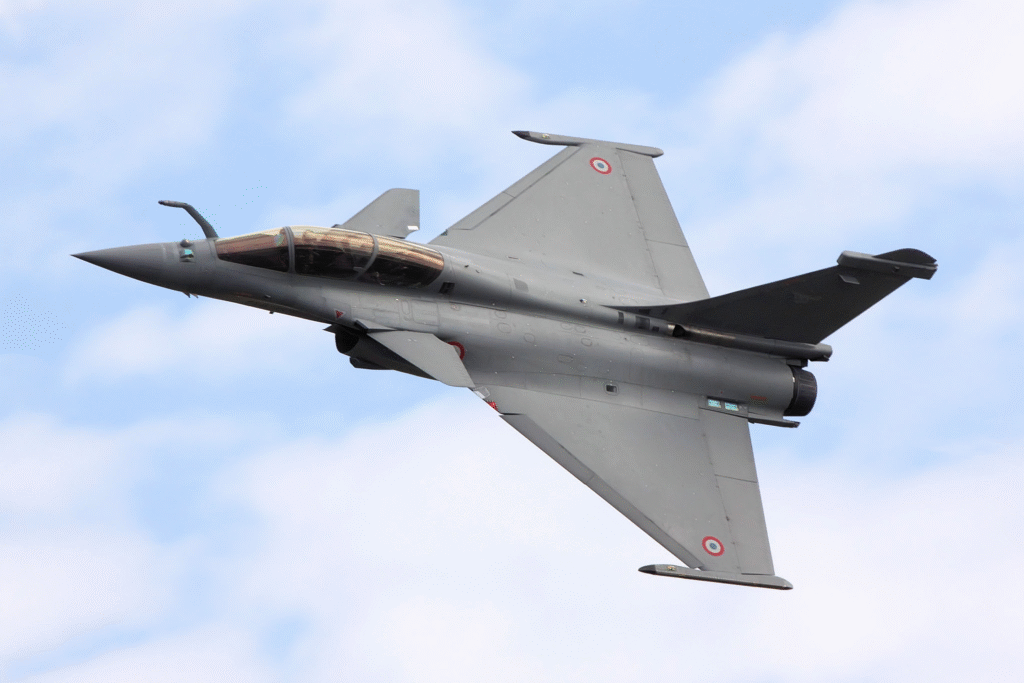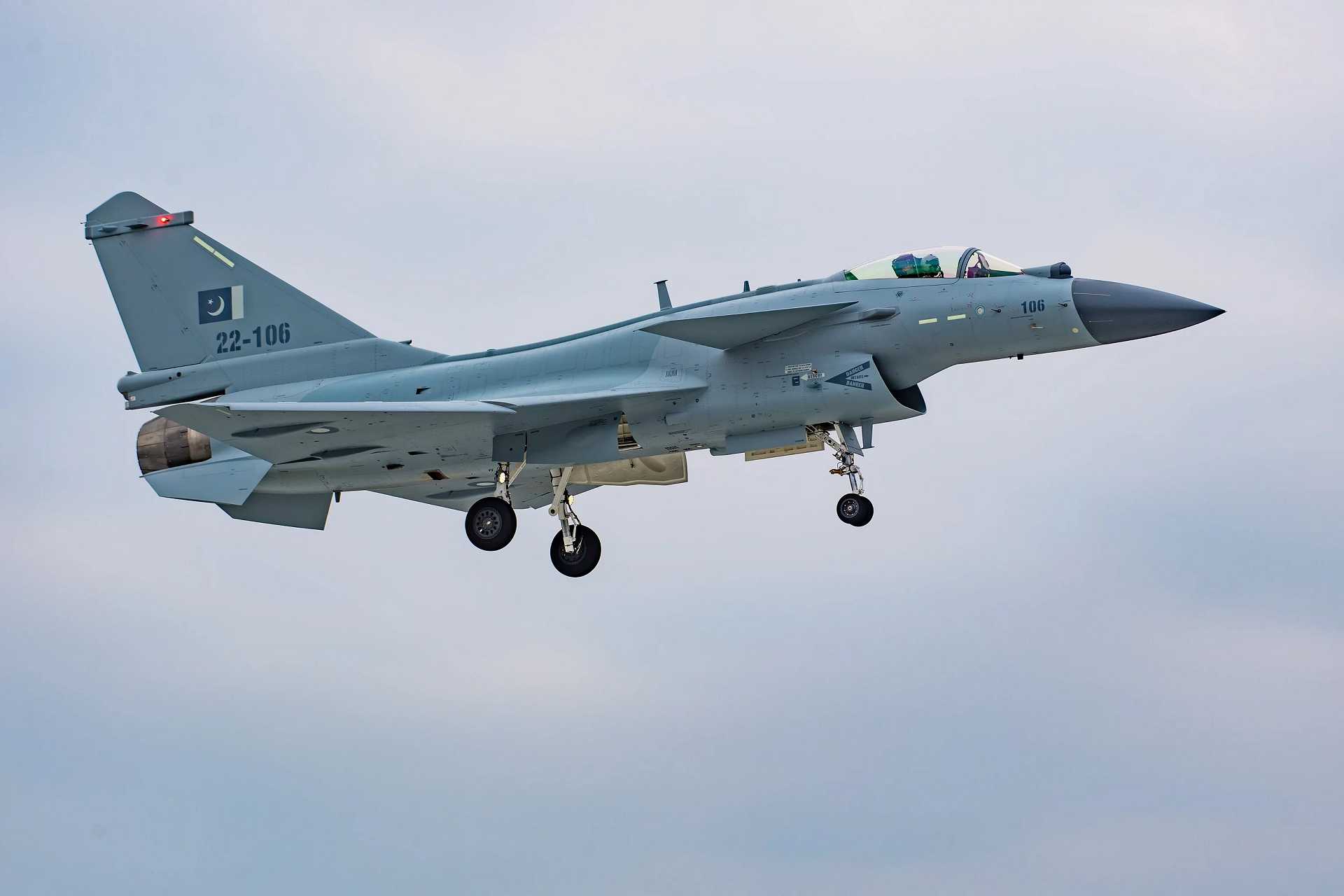
In a dramatic turn of events that has sent ripples across the global defense and aviation industries, the shares of Dassault Aviation, the French maker of the famed Rafale fighter jets, took a significant hit, plummeting by 10%. Meanwhile, the Chinese manufacturer of Pakistan’s J-10 fighter jets is witnessing an unprecedented surge in its market valuation following the high-stakes Operation Sindoor. This dual development has ignited widespread discussions about the evolving dynamics of global military aviation and the competitive pressures between these two high-profile aircraft manufacturers.
The Decline of Dassault Aviation Shares: A Closer Look
The precipitous decline in Dassault Aviation’s share value marks one of the company’s most significant market setbacks in recent years. Experts attribute this downturn to a combination of geopolitical factors, operational challenges, and shifting defense priorities among its traditional clientele.
The Rafale, once hailed as a game-changer in modern aerial combat, has been a symbol of French engineering excellence and a cornerstone of Dassault’s portfolio. However, the jet has faced increasing competition from newer and more cost-effective alternatives, particularly in emerging markets where budget constraints play a crucial role in procurement decisions.
Adding to Dassault’s woes are concerns about the long-term sustainability of its supply chain and production capabilities. Recent reports suggest delays in fulfilling orders for several key clients, raising questions about the company’s ability to meet growing demand while maintaining quality and performance standards. The financial markets have reacted sharply to these developments, leading to a significant erosion of investor confidence.
The Rise of the Chinese J-10: Riding the Wave of Operation Sindoor
In stark contrast to Dassault’s struggles, the Chinese manufacturer of the J-10 has emerged as a major beneficiary of the recent geopolitical climate. Operation Sindoor, a strategically significant military campaign, showcased the J-10’s advanced capabilities, positioning it as a formidable player in the global fighter jet market.
The J-10, often referred to as the “Vigorous Dragon,” is a single-engine, multirole combat aircraft that has been a cornerstone of China’s air force modernization efforts. Developed by the Chengdu Aircraft Corporation, the jet boasts cutting-edge avionics, superior maneuverability, and a competitive price point, making it an attractive option for countries seeking advanced aerial capabilities without breaking the bank.
The aircraft’s performance during Operation Sindoor has further cemented its reputation as a reliable and effective platform. Analysts note that the J-10’s success underscores the growing sophistication of China’s defense industry and its ability to challenge established players like Dassault in the highly competitive fighter jet market.
The Geopolitical Context: Rafale vs. J-10
The contrasting fortunes of Dassault and the J-10’s manufacturer cannot be fully understood without examining the broader geopolitical landscape. The Rafale’s decline coincides with shifting alliances and procurement strategies among traditional buyers of Western defense equipment. Several countries that were once staunch supporters of European and American defense contractors are now exploring alternative suppliers, driven by cost considerations, technology transfer agreements, and geopolitical alignments.
On the other hand, China’s proactive approach to defense diplomacy has played a pivotal role in the J-10’s rise. By offering attractive financing options, joint production agreements, and robust after-sales support, China has managed to position itself as a viable alternative to Western suppliers. The success of the J-10 in Operation Sindoor has further validated this strategy, providing a strong case for prospective buyers to consider Chinese platforms for their defense needs.
Market Implications: Winners and Losers
The contrasting trajectories of Dassault and the J-10’s manufacturer have profound implications for the global defense market. For Dassault, the sharp decline in share value highlights the urgent need for strategic recalibration. The company must address production bottlenecks, enhance its value proposition, and explore new markets to regain investor confidence and maintain its competitive edge.
For the Chinese manufacturer, the surge in market valuation represents a significant milestone. The success of the J-10 is expected to open new avenues for exports, particularly in regions where affordability and performance are key considerations. This shift in market dynamics also underscores the increasing influence of non-Western players in shaping the future of military aviation.
The Role of Technology and Innovation
At the heart of the Rafale-J-10 rivalry is the ongoing quest for technological superiority. The Rafale, with its advanced radar systems, stealth capabilities, and multirole functionality, has long been considered one of the most sophisticated fighter jets in the world. However, the J-10’s recent upgrades, including enhanced avionics, weapons systems, and electronic warfare capabilities, have significantly narrowed the gap between the two platforms.
This competition underscores the critical importance of continuous innovation in maintaining a competitive edge in the defense industry. As countries invest heavily in research and development to enhance their military capabilities, the ability to integrate cutting-edge technologies into existing platforms will be a key determinant of success.
The Human Element: Pilots and Training

While much of the focus has been on the technical capabilities of the Rafale and J-10, it is important to recognize the role of pilots and training programs in maximizing the potential of these aircraft. Both Dassault and the J-10’s manufacturer have invested heavily in developing comprehensive training modules to ensure that operators can fully leverage the capabilities of their respective platforms.
Operation Sindoor, in particular, highlighted the importance of pilot skill and operational preparedness. The performance of J-10 pilots during the operation was widely praised, showcasing their ability to execute complex missions with precision and efficiency. This human element remains a critical factor in determining the overall effectiveness of any fighter jet.
Financial Implications for Global Markets
The sharp fluctuations in Dassault’s share prices and the rise in market valuation for the J-10’s manufacturer also have broader financial implications. Defense stocks are often considered a barometer of geopolitical stability, and their performance can influence investor sentiment across sectors. Dassault’s recent struggles have raised concerns among investors about the sustainability of traditional defense contractors in a rapidly evolving global market.
Conversely, the success of the J-10’s manufacturer has drawn significant interest from international investors, particularly those looking to capitalize on emerging markets. The growing demand for cost-effective and technologically advanced military solutions is expected to drive further investment in China’s defense sector, reshaping the competitive landscape for years to come.
The Role of Media and Public Perception
The media’s portrayal of the Rafale’s challenges and the J-10’s successes has played a significant role in shaping public perception. Operation Sindoor, in particular, received extensive media coverage, highlighting the J-10’s capabilities and operational efficiency. This positive coverage has not only boosted the aircraft’s reputation but also strengthened its appeal to potential buyers.
In contrast, the negative headlines surrounding Dassault’s share decline have amplified concerns about the company’s long-term viability. Public perception can significantly influence decision-making processes for governments and defense agencies, making it a critical factor in the success of any defense contractor.
Future Prospects for Dassault and the J-10 Manufacturer
Looking ahead, both Dassault and the J-10’s manufacturer face unique challenges and opportunities. For Dassault, the path to recovery will require a multifaceted approach, including strategic partnerships, enhanced production capabilities, and a renewed focus on innovation. The company must also address the geopolitical factors that have impacted its traditional markets, exploring new regions and customer bases to diversify its portfolio.
For the J-10’s manufacturer, the priority will be to build on its recent successes and capitalize on the growing demand for advanced yet affordable military solutions. Expanding its export footprint, maintaining a strong focus on research and development, and fostering robust relationships with client nations will be key to sustaining its momentum.
Historical Context: The Evolution of Fighter Jets
Understanding the trajectory of the Rafale and J-10 necessitates a glance back at the broader history of fighter jets. From World War I’s biplanes to the supersonic jets of the Cold War era, the evolution of air combat technology has been marked by leaps in speed, agility, and firepower. The Rafale, introduced in the late 20th century, represents the zenith of this evolution in Western aviation, while the J-10 showcases the rapid modernization of Chinese military engineering in the 21st century.
Key Export Markets and Strategic Alignments
While France has traditionally sold Rafale jets to nations like India, Egypt, and Qatar, China’s J-10 targets countries with more constrained budgets. Pakistan has become the largest operator of the J-10, citing its affordability and effective performance against rival platforms. This segmentation illustrates how both manufacturers have carved out distinct niches in the global market, appealing to different geopolitical and economic realities.
Conclusion: A Pivotal Moment in Military Aviation
The divergent fortunes of Dassault’s Rafale and China’s J-10 serve as a stark reminder of the rapidly evolving dynamics of global military aviation. As established players face mounting challenges and emerging competitors gain ground, the need for adaptability, innovation, and strategic foresight has never been greater.
For Dassault, the road ahead will require a concerted effort to address operational challenges, restore investor confidence, and reaffirm its position as a leader in the defense industry. For China’s J-10 manufacturer, the success of Operation Sindoor represents a golden opportunity to expand its footprint in the global market and solidify its reputation as a reliable provider of advanced military aircraft.
As the world watches these developments unfold, one thing is clear: the battle for dominance in the skies is far from over. The coming years will undoubtedly bring new challenges, opportunities, and breakthroughs that will shape the future of military aviation for generations to come.
Beyond Combat: The Dual-Use Capabilities of Military Jets
Increasingly, both the Rafale and J-10 have been positioned as platforms capable of civilian applications. From disaster relief to atmospheric data collection, the flexibility of modern fighter jets continues to be a field of exploration, suggesting avenues for nations to extract dual-use benefits from their investments in

